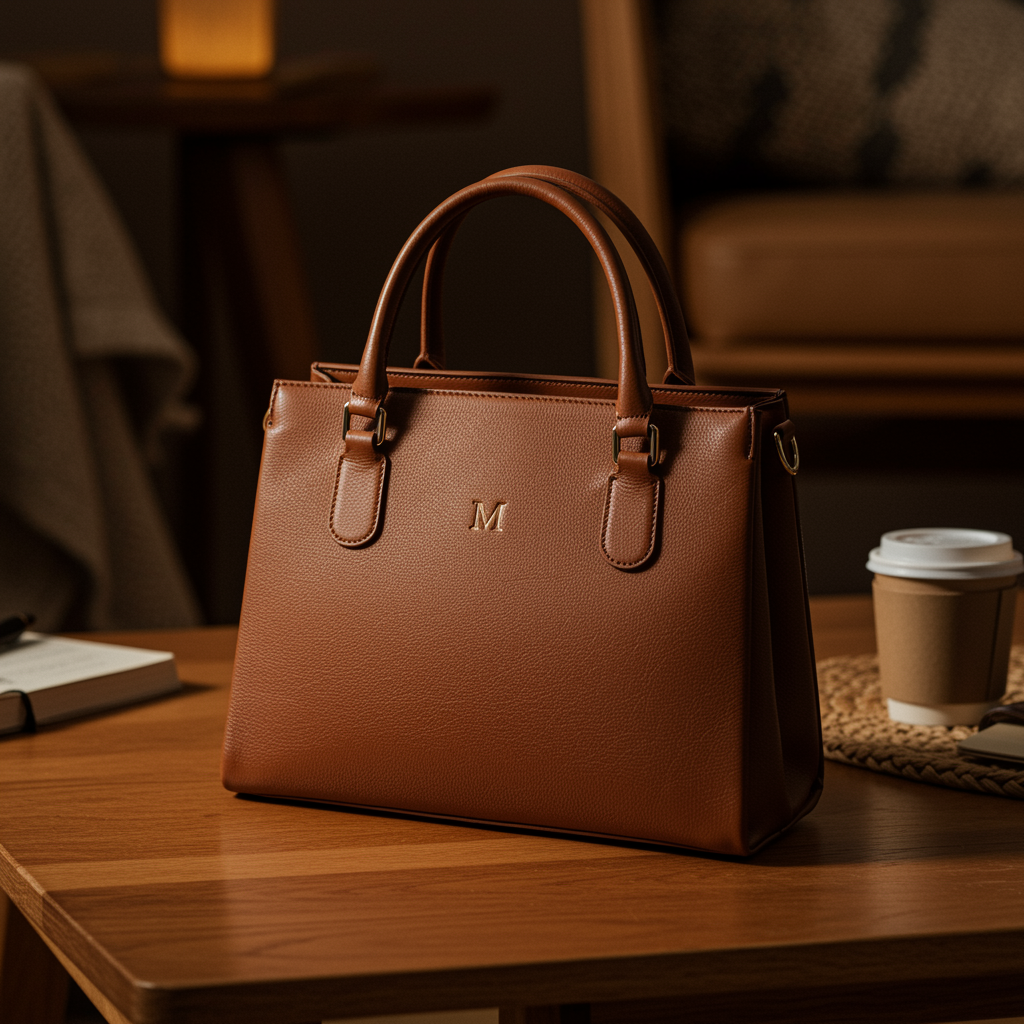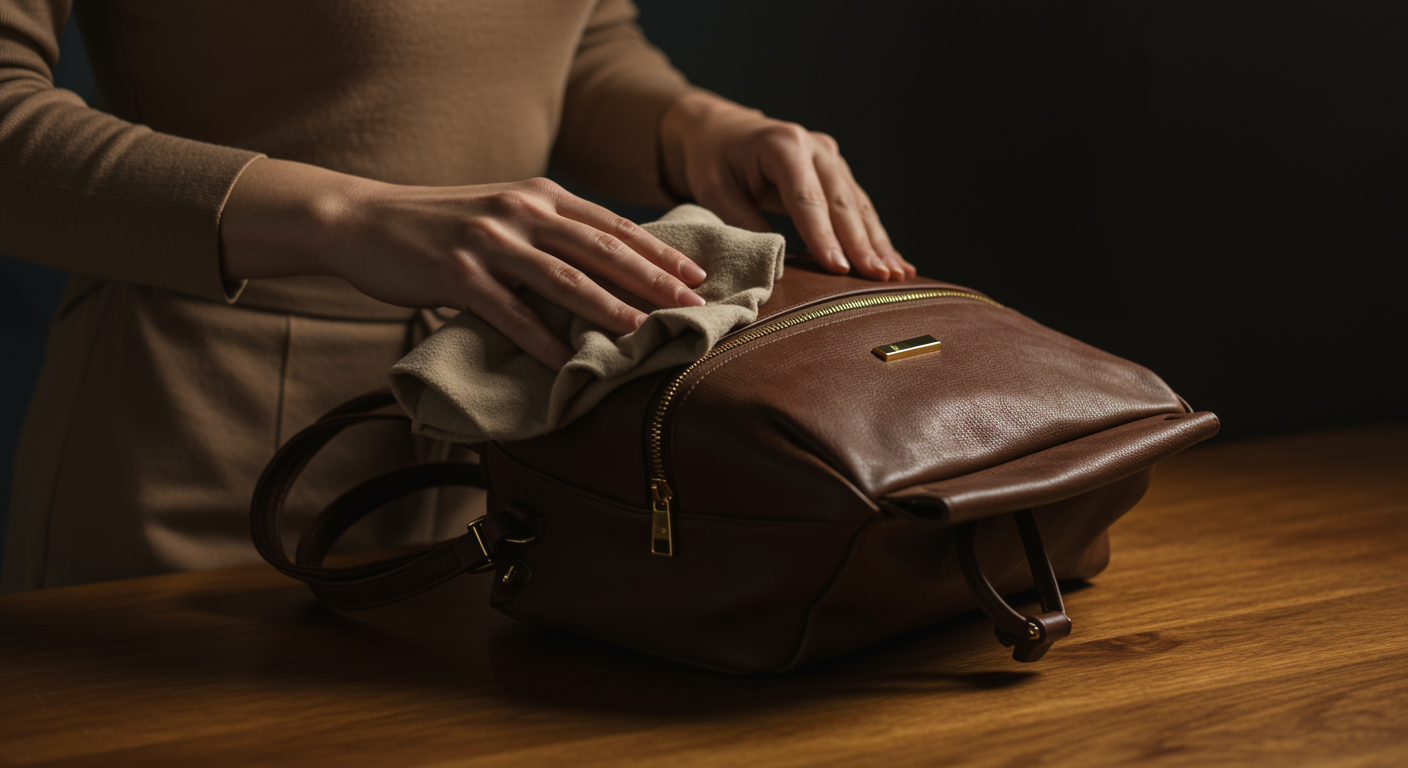At DÖTCH LEATHER, every piece is handcrafted from full-grain leather—a natural material known for its strength, beauty, and ability to age gracefully. With proper care, your leather bag will not only last for years but will also develop a rich patina that tells your personal story.
This guide will help you protect, maintain, and enjoy your DÖTCH product for a lifetime.

Daily Care
General Care Tips
- Handle with clean hands: Leather absorbs oils and dirt easily. Always handle your product with clean, dry hands.
- Avoid overfilling: Overloading can stretch the leather and distort its natural shape.
- Rotate use: Allow your leather bag to rest between uses to preserve its structure and finish.

Gentle Clean
Cleaning Your Leather
- Dust regularly: Wipe with a dry, soft cloth to remove surface dust.
- Light cleaning: Use a damp (not wet) cloth with lukewarm water. Avoid harsh chemicals, soaps, or baby wipes, which can strip natural oils.
- Deep cleaning: Use a pH-balanced leather cleaner every few months to remove buildup and keep the surface fresh.

Nourish
Conditioning Leather
Leather, like skin, needs moisture. Conditioning prevents dryness, cracks, and stiffness.
- Use a quality leather conditioner or cream every 3–6 months.
- Apply with a soft cloth, rubbing in gentle circular motions.
- Allow to absorb fully, then buff with a clean cloth for a subtle shine.

Shield
Protecting from Water & Stains
- Water exposure: Leather is not naturally waterproof. If your bag gets wet, blot (don’t rub) with a dry cloth and let it air-dry naturally, away from heat sources.
- Weatherproofing: Apply a leather protector spray suitable for full-grain leather to guard against moisture and stains.
- Spills & stains: Blot immediately. Do not use aggressive stain removers, as they can damage the leather’s finish.

Store Right
Storage Guidelines
- Store your leather product in its complimentary DÖTCH dust cover when not in use.
- Keep in a cool, dry place away from direct sunlight and humidity.
- Avoid plastic bags, which trap moisture and encourage mildew.
- For structured bags, stuff with acid-free paper or fabric to maintain their shape.

Natural Beauty
Ageing & Patina
One of the most beautiful features of full-grain leather is its ability to develop patina—a natural darkening and soft sheen that occurs with time and use. This is not a flaw, but a hallmark of authenticity and craftsmanship, making each piece truly unique.

Avoid This
What to Avoid
- Prolonged exposure to sunlight (causes fading and drying).
- Contact with oils, perfumes, or makeup.
- Sharp objects that may scratch or puncture the surface.
- Direct heat (hair dryers, radiators, or dryers) to “speed up” drying.

Expert Help
Professional Care
For significant stains, deep scratches, or restoration, we recommend consulting a professional leather specialist. Attempting to fix such issues at home may worsen the damage.
Leather is a living material that matures with time. By following these care steps, your DÖTCH bag will remain a trusted companion for decades—carrying not just your essentials, but your story.
DÖTCH LEATHER – Crafted to Last.


